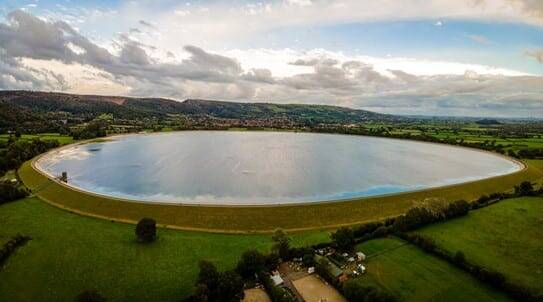You’ve reached your limit!
To continue enjoying Utility Week Innovate, brought to you in association with Utility Week Live or gain unlimited Utility Week site access choose the option that applies to you below:
Register to access Utility Week Innovate
- Get the latest insight on frontline business challenges
- Receive specialist sector newsletters to keep you informed
- Access our Utility Week Innovate content for free
- Join us in bringing collaborative innovation to life at Utility Week Live

Bristol Water has updated its reservoir monitoring system using satellite technology to watch its 15 dams from space for movement, pollution and leakage as well as changes to water.
Following the reservoir safety review commissioned in the wake of near failure at Toddbrook Reservoir in Derbyshire, Bristol began using the technology to ensure safety standards for downstream communities.
 The Damsat system, developed by engineering and hydraulics group HR Wallingford, uses satellite technology including the analysis of spectral responses from satellite images and signals from navigation satellite systems, combined with real-time in-situ monitoring devices.
The Damsat system, developed by engineering and hydraulics group HR Wallingford, uses satellite technology including the analysis of spectral responses from satellite images and signals from navigation satellite systems, combined with real-time in-situ monitoring devices.
It can monitor and predict a host of safety indicators including dam movement, leakage and pollution, and water level changes.
Frank van der Kleij, head of asset risk and planning at Bristol, said: “Bristol Water is a proactive, innovative water company and dam safety is one of our highest priorities. Damsat will allow us to improve our surveillance and monitoring of these critical assets.”
Craig Goff, supervising panel engineer for the reservoirs and technical director at HR Wallingford, added that continual surveillance and early analysis of behavioural changes between site visits allows teams to focus their attention to any problem areas of a site as required.
Earlier this year a two-year repair plan was set out for the Toddbrook Reservoir in Whaley Bridge, which partially collapsed in August 2019 putting nearby towns at risk and shining a light on reservoir safety across the country. The incident prompted the Balmforth inquiry into reservoir safety, which set out proposals to improve the approach for inspections and encouraging managers to be proactive to ensure safety.
Please login or Register to leave a comment.